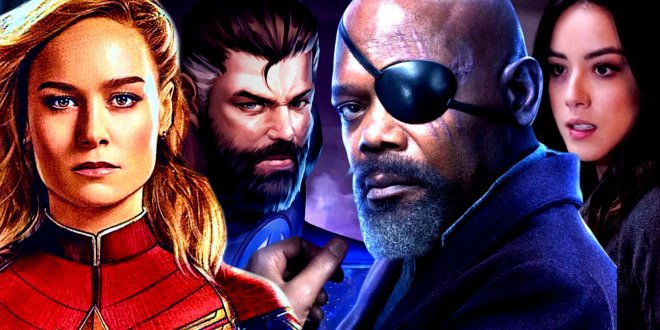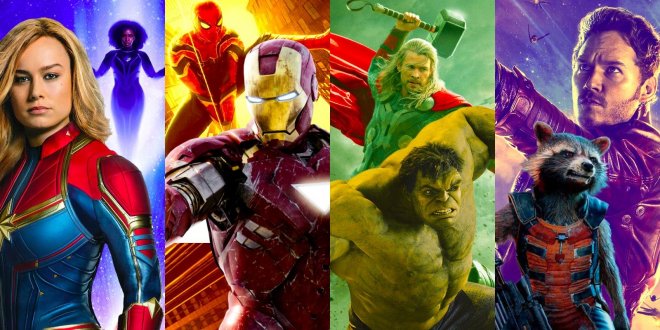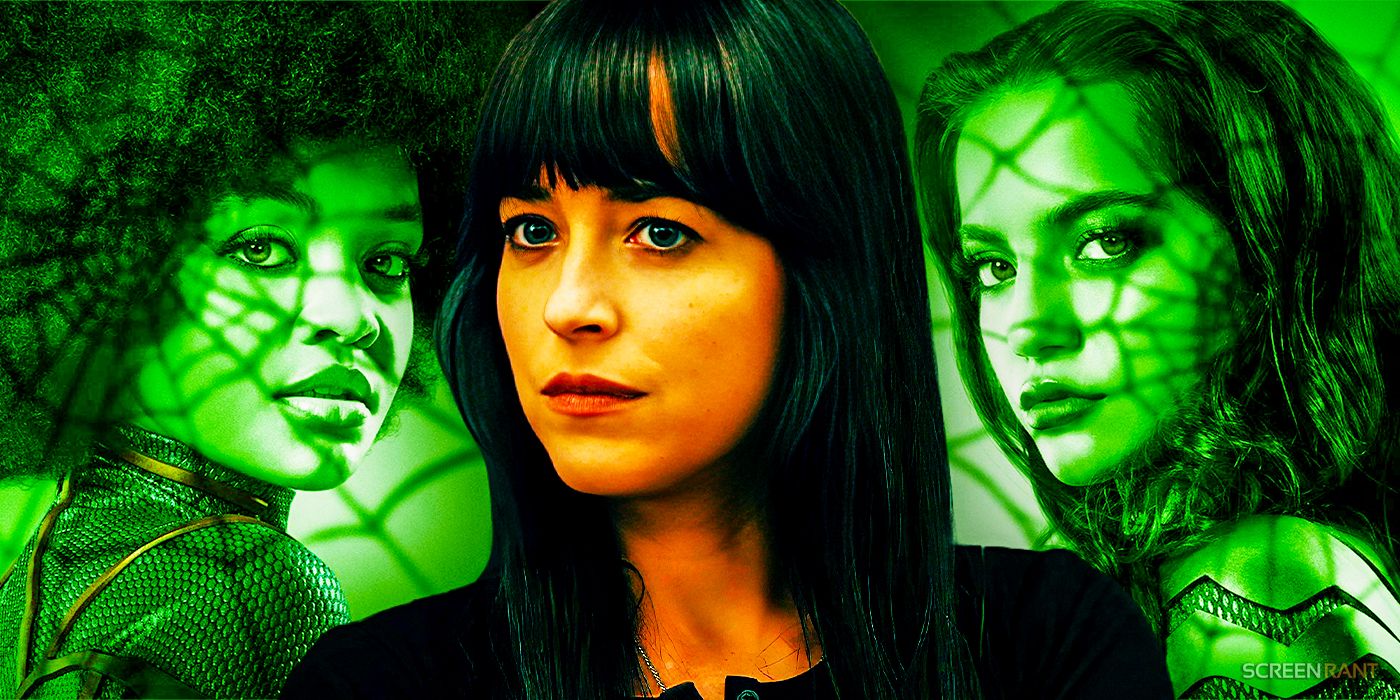6 Huge Risks The MCU Took That Ultimately Paid Off
Marvel Studios made various risky decisions while building the Marvel Cinematic Universe, most of which have paid off as the franchise continues to grow. Superhero movies have existed since long before the MCU was created. Blade and Sam Raimi's Spider-Man were big hits in the early 2000s, Richard Donner's Superman and Tim Burton's Batman were successful blockbusters several years earlier, and Captain America was first adapted to live-action back in the 1944 black-and-white Captain America serial film. However, superheroes have dominated the cinematic landscape since the 2010s, mostly because of the MCU.
Establishing an interconnected franchise based on comic books may seem like an obvious goal nowadays, but it was a much more unlikely idea before the MCU existed. There were countless different variables at play while the Marvel Cinematic Universe was taking shape, and several leaps of faith were necessary. From casting choices to Easter eggs, the MCU has attained immense success thanks to bold decisions from the creative minds behind the franchise.
6 Casting Robert Downey Jr. as Tony Stark in Iron Man![]() Robert Downey Jr. and his MCU character, Tony Stark, a.k.a. Iron Man, have been the MCU's heart and soul since its inception, so much so that Iron Man's legacy continues to be important in the Multiverse Saga after Tony Stark's death in Avengers: Endgame. But before 2008's Iron Man, casting Robert Downey Jr. in a blockbuster movie was quite a risky move, as Downey Jr. was only beginning to overcome his personal issues and escape the bad publicity they had cast over his career. Fortunately, Marvel Studios head Kevin Feige and Iron Man director Jon Favreau insisted on casting Robert Downey Jr., even against executive pushback, and the rest is now history.
Robert Downey Jr. and his MCU character, Tony Stark, a.k.a. Iron Man, have been the MCU's heart and soul since its inception, so much so that Iron Man's legacy continues to be important in the Multiverse Saga after Tony Stark's death in Avengers: Endgame. But before 2008's Iron Man, casting Robert Downey Jr. in a blockbuster movie was quite a risky move, as Downey Jr. was only beginning to overcome his personal issues and escape the bad publicity they had cast over his career. Fortunately, Marvel Studios head Kevin Feige and Iron Man director Jon Favreau insisted on casting Robert Downey Jr., even against executive pushback, and the rest is now history.
5 Teasing The Avengers in Iron Man’s Post-Credits Scene![]() While the idea for a live-action Avengers movie existed long before it materialized, the possibility of actually making it a reality was still dubious at the beginning of the MCU. Iron Man focused solely on establishing Iron Man as a hero before teasing any possible crossover event. Still, Samuel L. Jackson's appearance in Iron Man's post-credits scene went ahead and set up The Avengers explicitly, which became a promise from Marvel to the fans who stayed after the credits at a time when post-credits scenes weren't the norm.
While the idea for a live-action Avengers movie existed long before it materialized, the possibility of actually making it a reality was still dubious at the beginning of the MCU. Iron Man focused solely on establishing Iron Man as a hero before teasing any possible crossover event. Still, Samuel L. Jackson's appearance in Iron Man's post-credits scene went ahead and set up The Avengers explicitly, which became a promise from Marvel to the fans who stayed after the credits at a time when post-credits scenes weren't the norm.
A commercial and critical failure by The Incredible Hulk, Thor, or Captain America could have easily made it difficult for Iron Man's post-credits scene to deliver its promise, similar to how various post-credits scenes in the MCU and in other franchises such as the DCEU have failed to pay off their sequel set-ups. Luckily, Phase 1 was successful enough to lead into The Avengers, which in turn guaranteed another risky post-credits scene that teased an even bigger event: Thanos' first-ever MCU appearance several years before Avengers: Infinity War and Avengers: Endgame.
4 Giving Lesser-Known Marvel Characters Their Own Movie![]() Iron Man, Thor, and Captain America are now A-list superheroes, and they have been important characters in Marvel Comics for decades. However, they weren't nearly as famous as non-MCU Marvel movie protagonists such as Spider-Man, Hulk, and the X-Men, which made their live-action adaptations' popularity with audiences difficult to predict. Once the core heroes were established and The Avengers was a success, the MCU could have also gone the safe route and focused exclusively on the original six, with only direct sequels to their solo movies and Avengers crossovers keeping the franchise alive.
Iron Man, Thor, and Captain America are now A-list superheroes, and they have been important characters in Marvel Comics for decades. However, they weren't nearly as famous as non-MCU Marvel movie protagonists such as Spider-Man, Hulk, and the X-Men, which made their live-action adaptations' popularity with audiences difficult to predict. Once the core heroes were established and The Avengers was a success, the MCU could have also gone the safe route and focused exclusively on the original six, with only direct sequels to their solo movies and Avengers crossovers keeping the franchise alive.
Marvel went one step ahead and began introducing lesser-known characters such as the Guardians of the Galaxy and Ant-Man, which also had a comic book history but were unproven with general audiences. Peggy Carter had her own series, and Agent Coulson received a One-Shot and a TV show. Then, more famous heroes such as Doctor Strange, Black Panther, and Captain Marvel expanded the MCU, and now Marvel Studios is confident enough to give more obscure characters such as Echo and Wonder Man their own MCU projects.
3 Planning The MCU Ahead Several Years In Advance![]() There was a high degree of improvisation involved in creating the MCU. How Tony Stark's appearance in The Incredible Hulk's ending would tie into The Avengers wasn't exactly planned out, and even when filming Iron Man, Robert Downey Jr. and director Jon Favreau shaped the movie without a solid script. Still, producer Kevin Feige was certain of how he wanted the franchise to look in the far future, and Marvel's strategy of slowly building up to each Avengers movie demonstrates their efforts in planning ahead.
There was a high degree of improvisation involved in creating the MCU. How Tony Stark's appearance in The Incredible Hulk's ending would tie into The Avengers wasn't exactly planned out, and even when filming Iron Man, Robert Downey Jr. and director Jon Favreau shaped the movie without a solid script. Still, producer Kevin Feige was certain of how he wanted the franchise to look in the far future, and Marvel's strategy of slowly building up to each Avengers movie demonstrates their efforts in planning ahead.
[圖擷取自網路,如有疑問請私訊]
Establishing an interconnected franchise based on comic books may seem like an obvious goal nowadays, but it was a much more unlikely idea before the MCU existed. There were countless different variables at play while the Marvel Cinematic Universe was taking shape, and several leaps of faith were necessary. From casting choices to Easter eggs, the MCU has attained immense success thanks to bold decisions from the creative minds behind the franchise.
6 Casting Robert Downey Jr. as Tony Stark in Iron Man
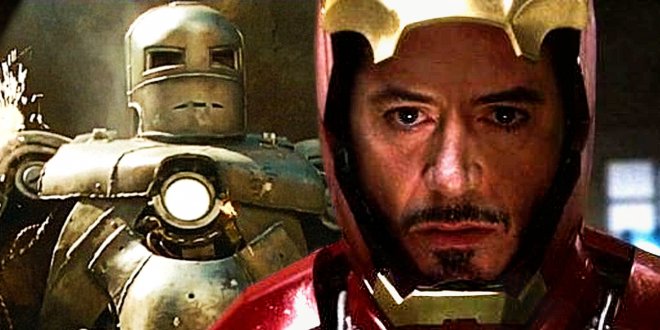 Robert Downey Jr. and his MCU character, Tony Stark, a.k.a. Iron Man, have been the MCU's heart and soul since its inception, so much so that Iron Man's legacy continues to be important in the Multiverse Saga after Tony Stark's death in Avengers: Endgame. But before 2008's Iron Man, casting Robert Downey Jr. in a blockbuster movie was quite a risky move, as Downey Jr. was only beginning to overcome his personal issues and escape the bad publicity they had cast over his career. Fortunately, Marvel Studios head Kevin Feige and Iron Man director Jon Favreau insisted on casting Robert Downey Jr., even against executive pushback, and the rest is now history.
Robert Downey Jr. and his MCU character, Tony Stark, a.k.a. Iron Man, have been the MCU's heart and soul since its inception, so much so that Iron Man's legacy continues to be important in the Multiverse Saga after Tony Stark's death in Avengers: Endgame. But before 2008's Iron Man, casting Robert Downey Jr. in a blockbuster movie was quite a risky move, as Downey Jr. was only beginning to overcome his personal issues and escape the bad publicity they had cast over his career. Fortunately, Marvel Studios head Kevin Feige and Iron Man director Jon Favreau insisted on casting Robert Downey Jr., even against executive pushback, and the rest is now history.5 Teasing The Avengers in Iron Man’s Post-Credits Scene
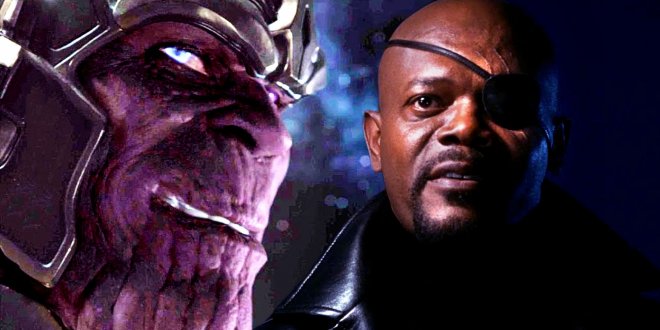 While the idea for a live-action Avengers movie existed long before it materialized, the possibility of actually making it a reality was still dubious at the beginning of the MCU. Iron Man focused solely on establishing Iron Man as a hero before teasing any possible crossover event. Still, Samuel L. Jackson's appearance in Iron Man's post-credits scene went ahead and set up The Avengers explicitly, which became a promise from Marvel to the fans who stayed after the credits at a time when post-credits scenes weren't the norm.
While the idea for a live-action Avengers movie existed long before it materialized, the possibility of actually making it a reality was still dubious at the beginning of the MCU. Iron Man focused solely on establishing Iron Man as a hero before teasing any possible crossover event. Still, Samuel L. Jackson's appearance in Iron Man's post-credits scene went ahead and set up The Avengers explicitly, which became a promise from Marvel to the fans who stayed after the credits at a time when post-credits scenes weren't the norm.A commercial and critical failure by The Incredible Hulk, Thor, or Captain America could have easily made it difficult for Iron Man's post-credits scene to deliver its promise, similar to how various post-credits scenes in the MCU and in other franchises such as the DCEU have failed to pay off their sequel set-ups. Luckily, Phase 1 was successful enough to lead into The Avengers, which in turn guaranteed another risky post-credits scene that teased an even bigger event: Thanos' first-ever MCU appearance several years before Avengers: Infinity War and Avengers: Endgame.
4 Giving Lesser-Known Marvel Characters Their Own Movie
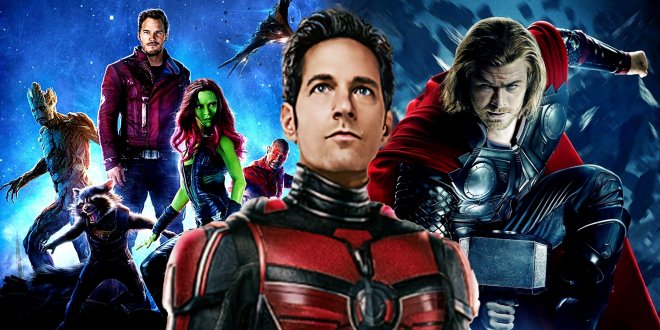 Iron Man, Thor, and Captain America are now A-list superheroes, and they have been important characters in Marvel Comics for decades. However, they weren't nearly as famous as non-MCU Marvel movie protagonists such as Spider-Man, Hulk, and the X-Men, which made their live-action adaptations' popularity with audiences difficult to predict. Once the core heroes were established and The Avengers was a success, the MCU could have also gone the safe route and focused exclusively on the original six, with only direct sequels to their solo movies and Avengers crossovers keeping the franchise alive.
Iron Man, Thor, and Captain America are now A-list superheroes, and they have been important characters in Marvel Comics for decades. However, they weren't nearly as famous as non-MCU Marvel movie protagonists such as Spider-Man, Hulk, and the X-Men, which made their live-action adaptations' popularity with audiences difficult to predict. Once the core heroes were established and The Avengers was a success, the MCU could have also gone the safe route and focused exclusively on the original six, with only direct sequels to their solo movies and Avengers crossovers keeping the franchise alive.Marvel went one step ahead and began introducing lesser-known characters such as the Guardians of the Galaxy and Ant-Man, which also had a comic book history but were unproven with general audiences. Peggy Carter had her own series, and Agent Coulson received a One-Shot and a TV show. Then, more famous heroes such as Doctor Strange, Black Panther, and Captain Marvel expanded the MCU, and now Marvel Studios is confident enough to give more obscure characters such as Echo and Wonder Man their own MCU projects.
3 Planning The MCU Ahead Several Years In Advance
 There was a high degree of improvisation involved in creating the MCU. How Tony Stark's appearance in The Incredible Hulk's ending would tie into The Avengers wasn't exactly planned out, and even when filming Iron Man, Robert Downey Jr. and director Jon Favreau shaped the movie without a solid script. Still, producer Kevin Feige was certain of how he wanted the franchise to look in the far future, and Marvel's strategy of slowly building up to each Avengers movie demonstrates their efforts in planning ahead.
There was a high degree of improvisation involved in creating the MCU. How Tony Stark's appearance in The Incredible Hulk's ending would tie into The Avengers wasn't exactly planned out, and even when filming Iron Man, Robert Downey Jr. and director Jon Favreau shaped the movie without a solid script. Still, producer Kevin Feige was certain of how he wanted the franchise to look in the far future, and Marvel's strategy of slowly building up to each Avengers movie demonstrates their efforts in planning ahead.[圖擷取自網路,如有疑問請私訊]
|
本篇 |
不想錯過? 請追蹤FB專頁! |
| 喜歡這篇嗎?快分享吧! |
相關文章
tag_marvel










